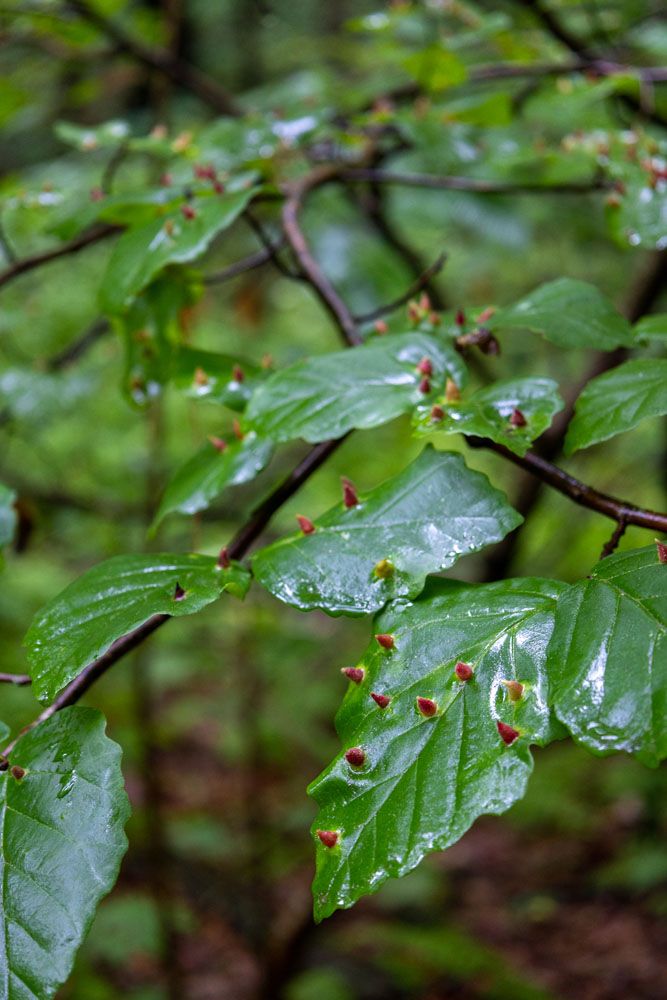
Witch-hazel Leaf Gall Aphid – Hormaphis hamamelidis
Witch-hazel Leaf Gall Aphid (Hormaphis hamamelidis)
Latin Name: Hormaphis Hamamelidis
Common Name: Witch-hazel Leaf Gall Aphid
Appearance:
The witch-hazel cone gall aphid (Hormaphis hamamelidis) is a microscopic insect belonging to the aphid superfamily that leaves a conical gall structure on green witch-hazel plants at first but quickly becomes brilliant red.
Hosts plants:
Witchhazel (Hamamelis virginiana) is the primary host, while river birch (Betula nigra) is the secondary host.
Damage caused by Witch-hazel Leaf Gall Aphid:
Aphids that cause conical galls on witch hazel leaves are known as witch hazel leaf gall aphids. This stage does not appear to be connected with sooty mold. The aleurodiform stage of birch excretes honeydew, used by sooty molds to disfigure the birch leaf further.
Description about Leaf chewers:
Chewing insect damage is the most well-known kind of insect damage to plants. A total of 276 adult and juvenile leaf-chewing insects from 156 species have been discovered. Beetles are the most common insect, although leaf chewers among grasshoppers, stick insects and caterpillars, and a few ants. Insects having mouthparts consisting of two opposing mandibles, or jaws, produce chewing damage. Rough leaves, foliage consumption, and mining in leaves, stems, and trunks of plants are caused by insects chewing mouthparts.
Life History and Habits:
Hormaphis cornu, the witch hazel leaf gall aphid, is most commonly seen on birch leaves in late summer or fall as the “aleurodiform” (whitefly form). These whitefly-like aphids give birth to nymphs with wings in late summer. These winged aphids return to witch hazel and produce a generation of wingless females and males, which mature and lay overwintering eggs. The overwintering eggs hatch next spring, and the juvenile aphids cause witch hazel to form leaf galls inside which the aphids may grow and increase. Because the galls are fashioned like a cone, these aphids are also known as “witch hazel cone gall aphids.” The young aphids emerge from the galls in late spring or early summer and fly to birch trees, where their progeny feed on the leaves at a stage that looks more like a scale bug or a mulberry whitefly nymph (the “aleurodiform”) than an aphid.
